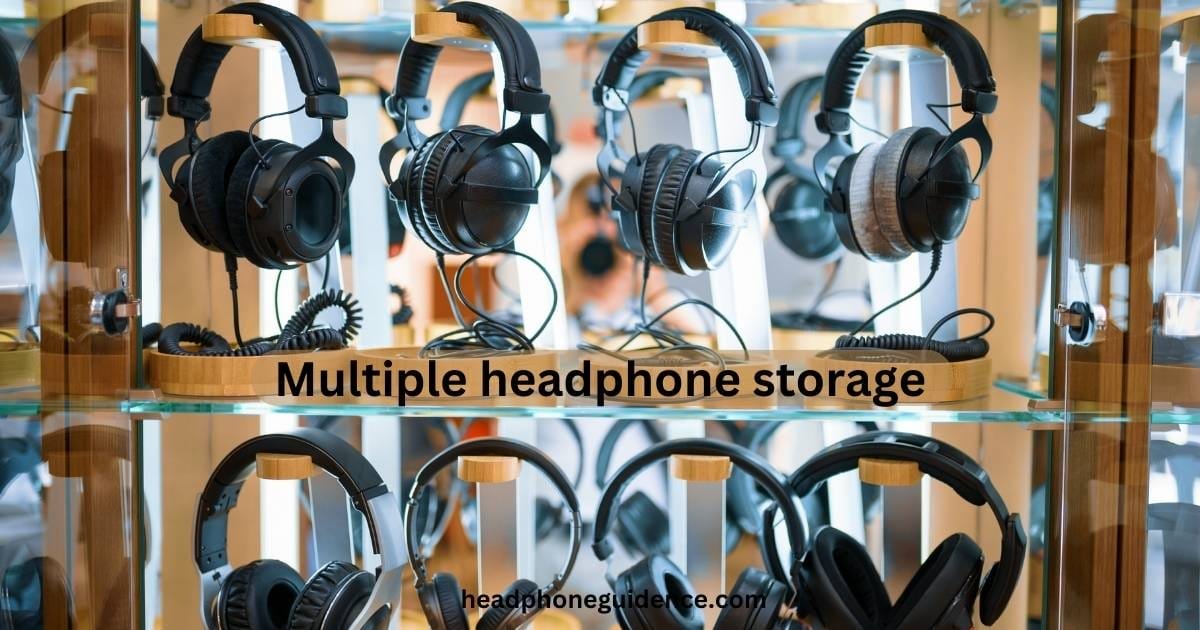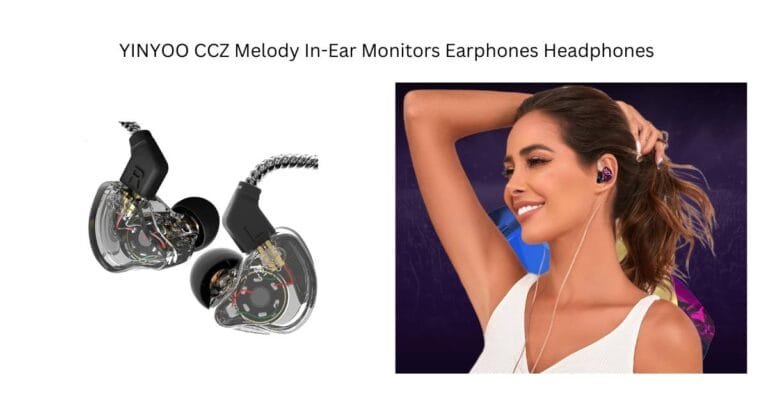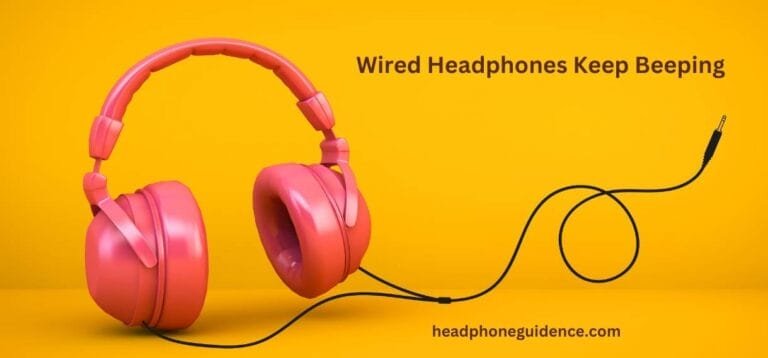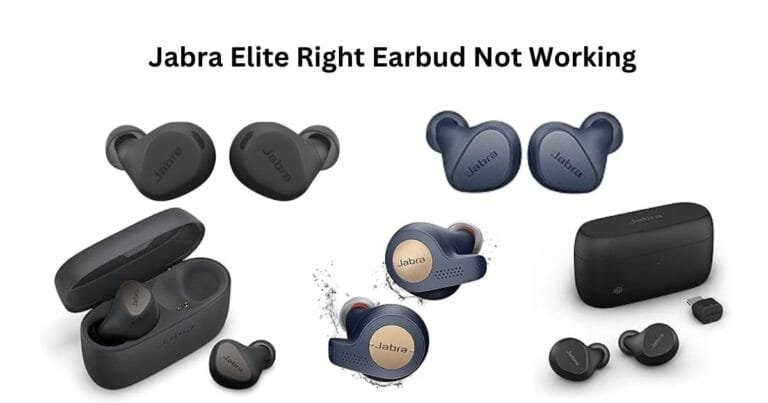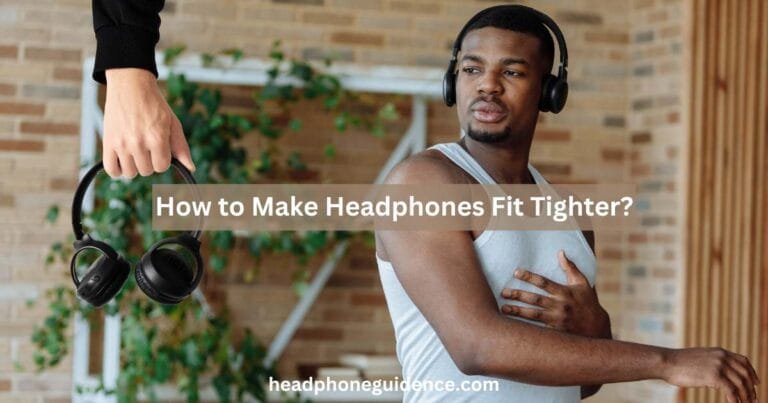How To Store Headphones In Classroom?
Headphone Storage Ideas
Properly storing headphones in a classroom may not be at the top of your priority list, but trust us, it’s worth paying attention to. Think about it: How often have you encountered a tangled mess of wires or lost earbuds when you needed them the most? The truth is disorganized headphone storage can lead to wasted time and frustration for both students and teachers.
By establishing an organized system for headphone storage, you create a more efficient learning environment. Students will spend less time searching for their headphones and more time focusing on their assignments. Teachers will appreciate the reduction in distractions caused by misplaced or damaged headphones.
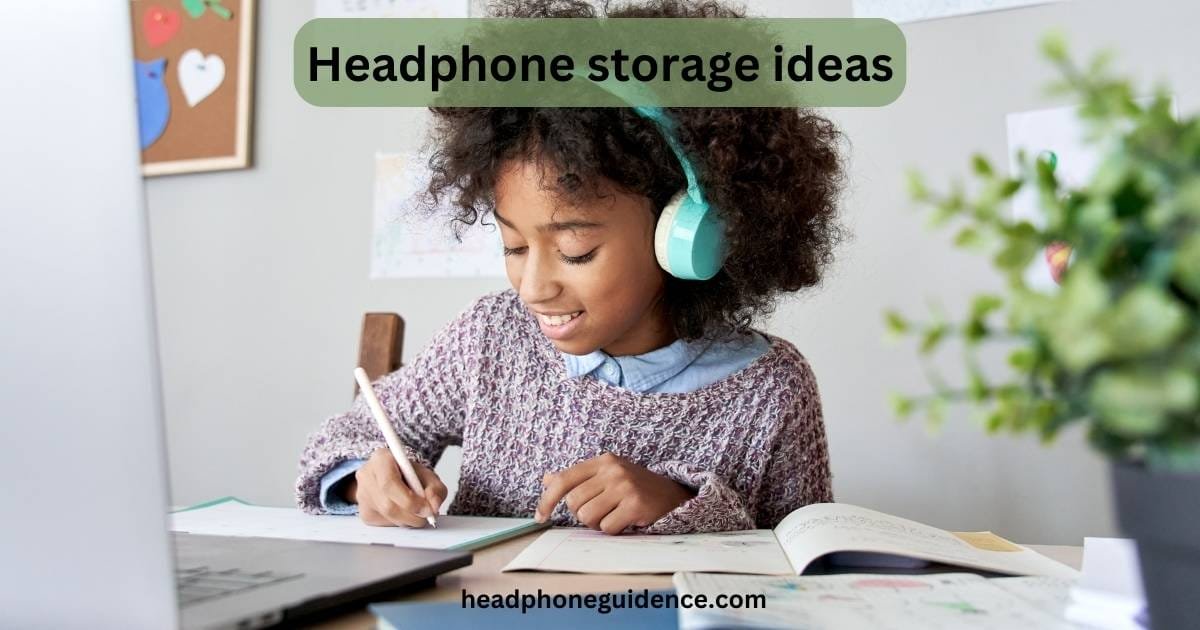

Aside from saving time and reducing frustrations, properly stored headphones have practical benefits. Tangled cords are not only unsightly but can also pose safety risks, such as tripping hazards. Storing headphones neatly helps prevent unnecessary accidents that could disrupt class activities.
Related: Which Headphone Color is Best?
Furthermore, keeping track of individual students’ headphones becomes easier when they are stored in a designated place. This can help with inventory management and ensure that each student has access to their pair without any mix-ups or sharing hygiene concerns.
Creating an organized space for headphone storage also instills valuable skills in students, such as responsibility and accountability. By teaching them how to store their own headphones properly, we empower them to take ownership of their belongings and develop good habits that extend beyond the classroom setting.
In conclusion (though we’re not quite there yet!), proper headphone storage is more than just tidiness; it enhances productivity, reduces distractions, promotes safety awareness, simplifies inventory management, and fosters important life skills among students.
Different Types of Headphones and their Storage Needs
Different types of headphones have different storage needs, and it’s important to understand how to store each type in a classroom setting properly. Over-ear headphones, for example, are larger and bulkier than in-ear headphones. These typically require more space for storage due to their size.
When storing over-ear headphones, it’s best to find a designated area to place them neatly. You can use headphone stands or hooks on the wall to keep them organized and prevent the tangling of wires. It’s also important to make sure that the ear cups are protected from dust or any potential damage.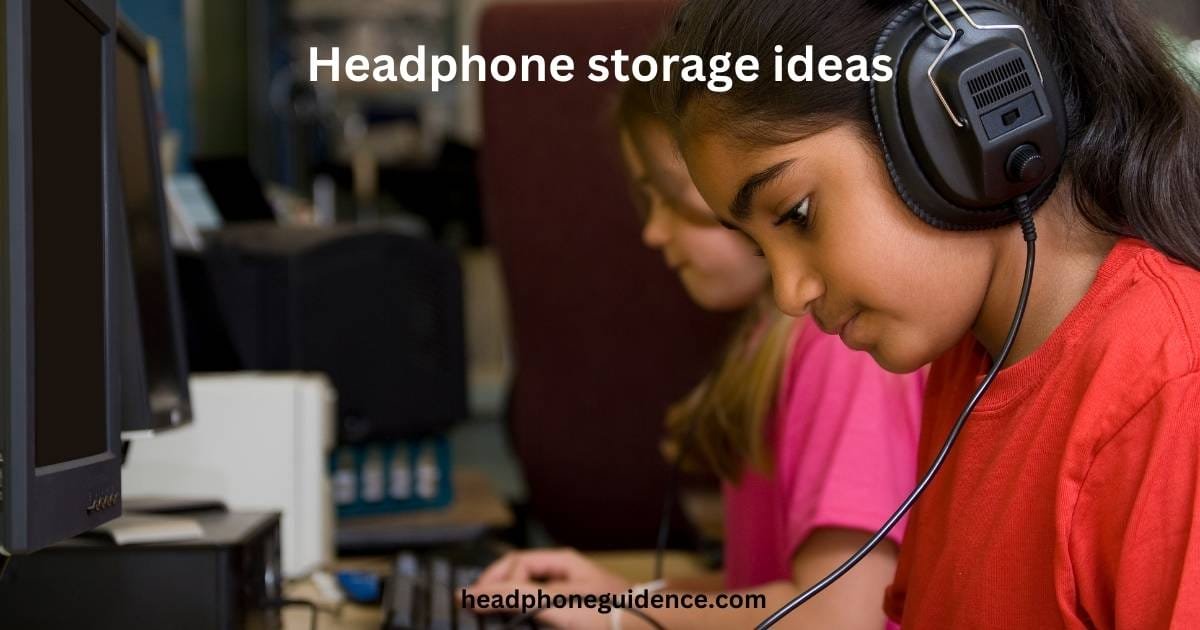

In-ear headphones, on the other hand, are smaller and more compact. They often come with cases or pouches for easy storage. Encourage students always to place their in-ear headphones back into their respective cases when not in use. This will help protect them from getting tangled or damaged.
Hanging Organizers or Small Baskets
For classrooms with limited space, consider using hanging organizers or small baskets that can be mounted on walls or stored away easily when not needed. This will help keep all headphones tidy and easily accessible for students.
Teaching students how to properly store their own headphones is also beneficial, as it instills responsibility and helps minimize loss or damage. Provide clear instructions on how they should be stored, and encourage regular check-ins with students regarding the condition of their personal belongings.
Maintaining an organized and tidy headphone storage system has several benefits: it saves time by preventing tangles, protects against damage caused by mishandling, promotes good hygiene practices through regular cleaning routines, and ensures equal access for all students.
By understanding the different types of headphones and their specific storage needs in a classroom environment, you can create an efficient system that maximizes longevity while keeping everything neat and accessible for all students.
Tips for storing over-ear headphones
Over-ear headphones are a popular choice for many students in the classroom. They provide superior sound quality and comfort, allowing students to focus on their audio tasks without any distractions. However, storing these headphones properly ensures their longevity and prevents damage.
One tip for storing over-ear headphones is to avoid bending or twisting the headband. This can cause unnecessary strain on the structure of the headphones and potentially lead to breakage over time. Instead, gently place them on a flat surface or hang them on a headphone stand if available.
Another important aspect of storage is keeping the cables organized. Tangled cords not only look messy but can also result in knots that are difficult to undo. Consider using cable ties or Velcro straps to keep wires neatly wrapped when not in use.
When protecting over-ear headphone cushions, it’s crucial to keep them clean and free from dirt or debris. Regularly wipe down the cushioned parts with a soft cloth or use specialized cleaning solutions recommended by the manufacturer.
Consider designating a specific area in your classroom for headphone storage. This could be as simple as having designated hooks or shelves where students can safely store their headphones when they’re not used.
By following these tips, you can help extend the lifespan of your over-ear headphones and maintain their optimal performance throughout countless audio learning sessions!
Tips for storing in-ear headphones
When it comes to storing in-ear headphones in a classroom, a few tips can help ensure they stay safe and organized. First and foremost, it’s important to have designated storage containers or pouches for each student’s headphones. This helps prevent tangling and makes it easier for students to locate their own pair.
One tip is to use small, zippered bags or cases specifically designed for earphones. These can be easily labeled with the student’s name and stored in a larger container or drawer. Another option is to use adhesive hooks on the wall or inside cabinets to hang the headphones when not in use.
Additionally, teaching students how to coil their earphone cords properly can go a long way in preventing tangles. Show them how to wrap the cord around their hand and secure it with a twist tie or Velcro strap before placing it back into the storage container.
It’s also worth considering using color-coded storage solutions, such as assigning different colors of pouches or containers for each grade level or class period. This helps keep things organized and reduces confusion among students when retrieving their headphones.
Having clear expectations about headphone storage and providing consistent reminders will help maintain an orderly classroom environment while prolonging the lifespan of these essential learning tools.
Creative storage solutions for classrooms with limited space
Classrooms are often filled with various equipment and supplies, making finding space to store headphones challenging. However, with creative thinking and innovative storage solutions, you can effectively organize and store headphones even in classrooms with limited space.
One solution is to utilize wall-mounted headphone hangers or hooks. These can be easily attached to the walls and provide a convenient place for students to hang their headphones when not in use. This not only saves space but also keeps the headphones within reach for quick access.
Another option is to repurpose existing classroom furniture or fixtures. For example, you could use a pegboard mounted on a cabinet door as a headphone storage station. Attach hooks or clips to the pegboard, where students can hang their headphones neatly.
If there’s no available wall space or furniture that can be repurposed, consider using labeled bins or containers specifically designed for headphone storage. These containers can be stacked vertically or placed on shelves without taking up too much room.
In addition, utilizing over-the-door organizers with pockets can be an efficient way to store smaller in-ear headphones. Each pocket can hold one pair of earbuds neatly folded inside, ensuring they don’t get tangled or damaged.
To maximize space efficiency further, think about using under-desk cable management systems that include small compartments specifically designed for storing headphones securely out of sight.
Teaching students how to store their own headphones properly is another crucial step toward maintaining an organized classroom environment. By instructing them on the importance of tidiness and providing clear guidelines on where and how to store their personal belongings, like headphones, after each use, everyone contributes towards a clutter-free learning environment.
In conclusion,
With these creative storage solutions, even classrooms with limited space can maintain an organized system for storing headphones efficiently. By implementing these ideas and teaching students proper storage practices, you’ll promote responsibility among your students while keeping valuable resources well-maintained and easily accessible.
Teaching students How to Store their own Headphones Properly
Teaching students how to store their own headphones properly is a crucial skill that can help maintain the longevity and functionality of these essential classroom tools. By instilling good habits early on, educators can empower students to take responsibility for their belongings and ensure that headphones are stored in an organized manner.
One effective way to teach students about headphone storage is through hands-on demonstrations. Show them the correct way to wrap the cords neatly without tangling or knotting them. Emphasize the importance of gently placing the headphones in their designated storage area, whether a shelf, drawer, or hook.
Moreover, please encourage students to label their headphones with their names or initials using stickers or tags. This helps prevent mix-ups and fosters a sense of ownership and responsibility among students.
Additionally, consider implementing regular reminders or check-ins during class that are specifically dedicated to headphone organization. Encourage students to assess if they have stored their headphones properly before leaving the classroom – this simple routine can help reinforce positive habits over time.
By teaching students how to store their own headphones properly, we equip them with valuable skills that extend beyond just keeping things tidy. It promotes accountability, respect for personal property, and organizational skills – all of which are vital qualities for success inside and outside the classroom environment.
The benefits of maintaining organized and tidy headphone storage
Keeping headphones organized and tidy in a classroom may seem like a small task, but it can benefit students and teachers significantly. When headphones are stored properly, they create an environment conducive to learning and reduce distractions.
One of the primary benefits of maintaining organized headphone storage is that it saves time. Imagine a scenario where students scramble to find their headphones before a lesson begins. This not only wastes valuable instructional time but also disrupts the flow of the class. By having designated spaces or containers for each student’s headphones, they can easily locate them when needed.
Additionally, tidy storage helps prolong the lifespan of the headphones. Tangled cords and jumbled piles increase the risk of damage, such as frayed wires or broken headbands. With proper organization, students will learn how to handle their headphones with care and store them in a way that minimizes wear and tear.
Furthermore, organized storage promotes hygiene by reducing germ spread. Headphones can harbor bacteria if shared among multiple users without being cleaned regularly. Having individual storage compartments ensures that each student has their own set of clean headphones, free from germs.
Moreover, maintaining an orderly system teaches valuable life skills such as responsibility and accountability. When students have ownership over their personal belongings and know where to find them easily, they develop important organizational habits beyond headphone storage.
Conclusion
Properly storing headphones in a classroom is crucial for maintaining their longevity and ensuring that they are always ready for use. By following the tips outlined in this article, you can create an organized and tidy storage system that will benefit both students and teachers.
Remember to consider the type of headphones you have when planning your storage solution. Over-ear headphones may require more space, while in-ear headphones need to be carefully stored to prevent damage.
Creative solutions such as using wall-mounted hooks or labeled bins can help maximize limited classroom space. Please encourage students to take responsibility for their own headphones by teaching them proper storage techniques.
Maintaining an organized headphone storage system offers many benefits. It reduces the risk of tangled wires, prevents accidental damage, and promotes a sense of orderliness within the classroom.
So, whether you opt for individual cubbies or a shared storage area, make sure to prioritize keeping those headphones safe and secure!
By implementing these strategies, you’ll not only prolong the lifespan of your classroom’s headphone collection but also ensure that they’re always readily available when needed. Happy listening!
FAQs for Headphone Organization in the Classroom
1. How do you make a headphone organizer for the classroom?
Creating a headphone organizer for the classroom is a practical way to keep headphones neat and accessible. Here’s a simple DIY method:
- Materials needed: Cardboard, colored paper, scissors, glue, markers.
- Cut the cardboard into a rectangular shape.
- Cover the cardboard with colored paper and decorate it.
- Attach pockets or loops made from colored paper to hold each pair of headphones.
- Label each pocket with the student’s name or a number.
- Hang or place the organizer on a designated wall or shelf for easy access.
2. How do you store headphones at school?
Storing headphones at school efficiently can prevent tangles and damage. Here are some methods:
- Use individual labeled bags or cases for each student.
- Assign a dedicated storage area with hooks, shelves, or cubbies.
- Consider a classroom headphone organizer for easy access.
- Encourage students to place headphones neatly in their bags when not in use.
- Implement a headphone management system that tracks usage and returns.
3. How do I store my headphones on my desk?
Keeping your headphones organized on your desk is essential for quick access and tidiness:
- Use a headphone stand or holder designed for desks.
- Consider magnetic cable organizers to prevent tangling.
- Place headphones in a designated drawer or container.
- Wrap the headphone cable neatly to avoid knots.
- Label or mark your headphones for easy identification.
4. How do you label headphones in the classroom?
Labeling headphones in the classroom helps prevent mix-ups and ensures students can find their own pairs:
- Use labels with the student’s name or a unique identifier.
- Attach labels to the headphone cord or earpieces.
- Consider color-coding labels for quick recognition.
- Regularly check and update labels to ensure accuracy.
- Implement a headphone tracking system for easy management.

